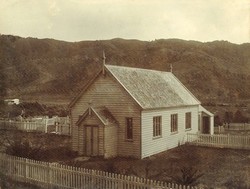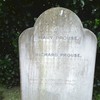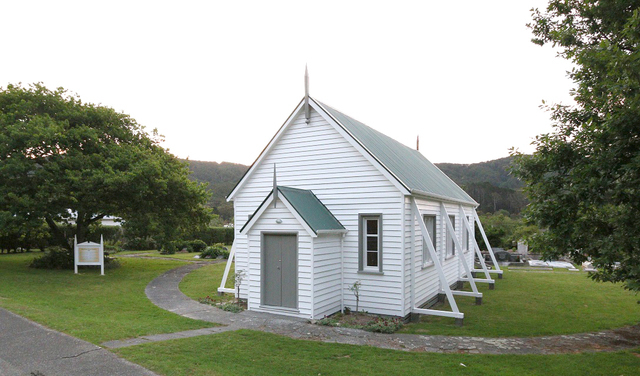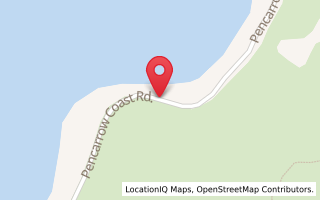Wainuiomata Coast Road Church
The Church

Coast Road Church c1880’s. - George A Southern Photo
The history of Wainuiomata’s Coast Road Church starts back in 1839 when Richard Prouse Snr., of Devon, England, with his wife Mary and six of their children emigrated to New Zealand. Richard vowed that if he did well in this new land, he would build a Church as his thanksgiving. The family finally settled in Wainuiomata in the early 1850’s and Richard established a saw mill there.
On 29 January 1853 Richard Prouse Snr purchased the land that would later become the site of the new Church.
Contrary to popular belief, it was in fact Richard Prouse Jnr., not his father, who helped built the Church. With the pit sawn timber from his own mill, and the help of John Crowther, a local carpenter, George and Charles Collis, and a gallant band of workers, a simplistic wooden Church that would serve the settlement of Wainuiomata for generations to come, grew as a labour of love and dedication to their faith.
This little historic Church sits in Wainuiomata's oldest graveyard. Opening services in the Church were held in February of 1866. The first known burial in the graveyard, was of James Riddle, a local labourer who died on 12 August 1862.
Although originally built as a Methodist place of worship, the Church has always been used for services of other denominations. This is evidenced by some of the burials in the graveyard, which are of Roman Catholics.
Originally erected in 1866 as a plain unlined building of around 20 feet wide by 30 feet long, the Church was soon struggling to accommodate the growing number of parishioners and by 1873 the length of the Church had been enlarged to around 42 feet and the vestry added, for £72. 1882 saw further improvements including the lining of the Church and the addition of the rostrum at the cost of £40. It is thought that the front porch was also added at this time.
With the building of St Stephen’s Church in 1957, the Coast Road Church fell into disuse apart from the occasional wedding and funeral. From 1972 - 2009, it housed the Wainuiomata Art Society and their presence helped keep the building intact.
Coast Road Church Article Written and Researched by Colleen Hira and Vicky Alexander
“The Methodist Church has a simple form that follows the pattern of many early colonial churches in New Zealand. It is rectangle in plan, measuring approximately 42’ 8” long and 20’ wide.
Originally it was only two bays long, approximately 30’, but was extended by one bay to its present length, and in 1873 the vestry was added.
The front porch addition was made on the east end of the building, possibly in 1882. The roof is gabled…it was originally sheathed in split totara shingles, and these are still in place under the corrugated iron sheathing that was put on in 1910*.
The walls are sheathed in pit-sawn totara weatherboards, approximately 200 x 25mm; they finish at the corners against a chamfered 90mm square solid stop. Such a high structure (the ridge is approximately 9 metres) with no cross walls for bracing would be susceptible to damage by wind loadings, and to counteract this, four buttresses were fixed along each side wall.
The walls and ceiling of the interior of the Church are fully lined with tongue and groove boards. The floor is tongue and groove boarding. 185mm wide, fixed with rectangular headed cut nails. There are three collar ties across the nave, and a raised platform for the pulpit at the western end.
The joinery consists of frames tongue and groove doors, with a panel door to the kitchen, and casement windows of unusual design to the north, east and south elevations”. - Chris Cochran, Conservation Report, July 1994
*The Church was re-roofed in 2004
|
© Copyright Wainuiomata Pioneer Church Preservation Society Inc
- Site map
|


